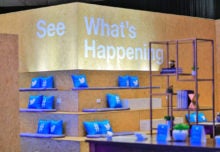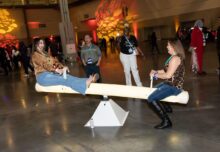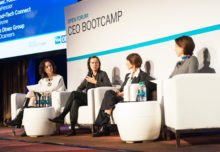After a successful 2023, almost 80 percent of exhibitors plan to attend the same number of events or more in 2024, and most exhibitor budgets will increase or stay the same, according to the new Freeman 2024 Exhibitor Trends Report released this month. The research focused on the current needs of exhibitors and gaps in expectations, and details actions to take to meet those needs while aligning exhibitor and attendee objectives. Key insights from the report:
Exhibit marketer demographics are shifting.
Forty-six percent of exhibit marketers are female, according to the report, which saw five-percent more female respondents overall. Meanwhile, the average age of respondents compared to last year’s report decreased, from 51 down to 47. Overall, the study saw three percent more Gen Z respondents, 12 percent more millennial respondents, six percent fewer Gen X respondents and nine percent fewer Baby Boomer respondents.
Exhibit marketer roles are also criss-crossing the landscape with 72 percent of respondents exhibiting at “a variety” of shows, including user conferences, internal meetings and consumer events.
There’s a lead gen gap.
An overwhelming majority of exhibitors (93 percent) believe that the “quality of expected attendees” is the most impactful outcome. And despite concerns around unpredictable costs, exhibitors say will invest if the event delivers quality leads. At the same time, the methods exhibitors use to measure are inconsistent and only 49 percent are extremely or very satisfied with lead acquisition.
Exhibitors want predictable, all-inclusive packages.
Indeed, 61 percent of exhibitors say that “unpredictable costs” have a major influence on how they exhibit, which suggests exhibitors want more control over their investment. This points to the need for packages to be tiered and tailored to exhibitor objectives.
Face-to-face interaction and hands-on experiences still rule.
Large exhibitors are more likely to attract attention through immersive experiences (33 percent), whereas small exhibitors are more likely to rely on after-hours events to meet attendees (25 percent). Elements like natural lighting, gamification and wellness opportunities don’t make a difference as a far as outcomes, exhibitors say.
Objectives have to come first.
Some exhibitors (16 percent) indicate that they’re planning to purchase additional square footage, but experts say the decision should be driven by the brand’s objectives. Smaller booths may prove more effective for attendees looking for personalization and quality connections, the report emphasizes, while larger booths can accommodate more immersive experiences and hands-on demos.
Have a story idea? Want us to cover your booth? Reach out to EM’s editor-at-large, Anna Huddleston.
Image Credit: iStock/jotily






